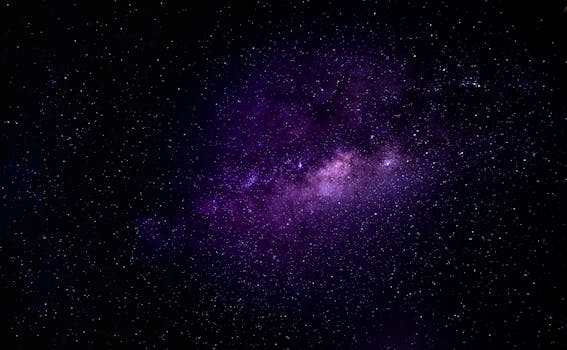
“
Beyond the Milky Way: Imagining New Worlds and Possibilities
Introduction
Imagine a universe beyond our own galaxy, the Milky Way, where new worlds and possibilities await. The idea of exploring the unknown has always fascinated human beings, and with the advancement of technology and space exploration, we are now closer than ever to discovering the secrets of the cosmos. In this article, we will delve into the mysteries of the universe beyond the Milky Way and explore the possibilities of new worlds and civilizations.
The Milky Way and Beyond
The Milky Way is just one of the billions of galaxies in the observable universe, and it is estimated that there are over 100 billion galaxies in the universe. Each galaxy is a massive, gravitationally bound system consisting of stars, stellar remnants, interstellar gas, dust, and dark matter, and they are all connected by a network of galaxy filaments. The Milky Way is a barred spiral galaxy, with a supermassive black hole at its center, and it is thought to have formed around 13.6 billion years ago.
But what lies beyond the Milky Way? The nearest major galaxy to the Milky Way is the Andromeda Galaxy, which is approximately 2.5 million light-years away. The Andromeda Galaxy is a spiral galaxy, similar to the Milky Way, and it is thought to be approaching us at a speed of around 250,000 miles per hour. In about 4.5 billion years, the Andromeda Galaxy will collide with the Milky Way, resulting in a massive merger of the two galaxies. For more on this fascinating topic, check out our article on Galaxies of Dreams.
Imagining New Worlds
The possibility of new worlds and civilizations beyond the Milky Way is a tantalizing one, and it has captured the imagination of scientists and science fiction writers alike. With the discovery of exoplanets, which are planets that orbit stars other than the Sun, the possibility of finding life beyond Earth has become a reality. In fact, NASA’s Kepler space telescope has discovered thousands of exoplanets, and many of these planets are believed to be located in the habitable zones of their respective stars, where conditions are suitable for life as we know it. This exploration is akin to the themes discussed in our post, From Stardust to Dreams.
One of the most promising places to search for life beyond the Milky Way is in the galaxy clusters, which are large groups of galaxies that are held together by gravity. These galaxy clusters are thought to be the largest structures in the universe, and they are filled with hot, X-ray emitting gas that can be used to detect the presence of life. The Square Kilometre Array (SKA) telescope, which is currently under construction, will be able to detect the faint signals of life from exoplanets and galaxy clusters, and it is expected to revolutionize our understanding of the universe. For more insights on the power of imagination and exploration, read our piece on Soaring Through the Cosmos.
Takeaways
- The Milky Way is just one of the billions of galaxies in the observable universe.
- The universe is full of mysteries and wonders, and there is still much to be discovered.
- The possibility of new worlds and civilizations beyond the Milky Way is a tantalizing one, and it has captured the imagination of scientists and science fiction writers alike.
- The discovery of exoplanets has opened up new possibilities for the search for life beyond Earth.
- The Square Kilometre Array (SKA) telescope will be able to detect the faint signals of life from exoplanets and galaxy clusters, and it is expected to revolutionize our understanding of the universe.
Conclusion
In conclusion, the universe beyond the Milky Way is a vast and mysterious place, full of wonders and possibilities. The discovery of new worlds and civilizations is a tantalizing prospect, and it has captured the imagination of scientists and science fiction writers alike. With the advancement of technology and space exploration, we are now closer than ever to discovering the secrets of the cosmos, and it is an exciting time to be alive.





